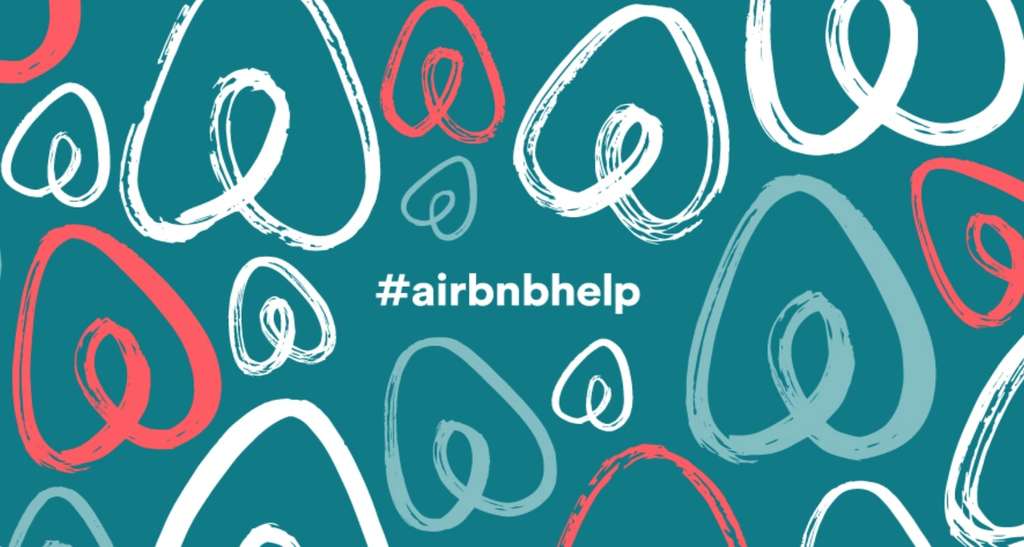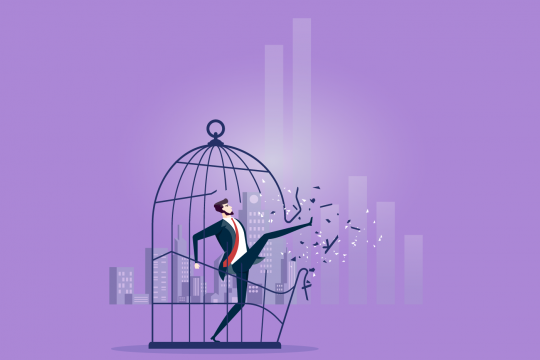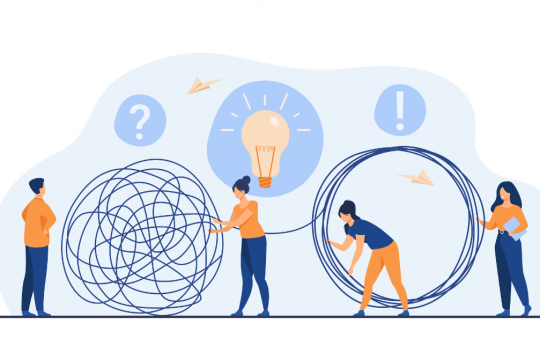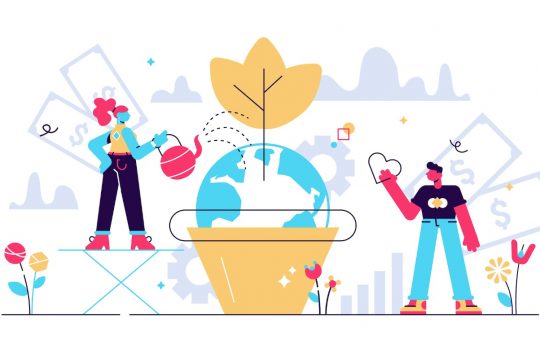Published in The Couch Potato – A weekly column of casual kopi chat over ideas on design, tech, education and all things under the sun. To help the average Potato become a smarter spud.
In this three-part series, we will be sharing our perspectives on the impact of Covid-19 on businesses, and how businesses can prepare for the new normal. We will examine aspects of the post-pandemic economy; the long-term influence on business models and the potential for a broad recovery led by enhanced productivity and innovation.
First, we learned how to survive and cope during the pandemic. Second, we need learn how to thrive in the post-pandemic world. Companies that have emerged from the crisis are beginning to see the importance of new capabilities to face the future.
The outbreak has dealt an indiscriminate blow to businesses, forcing everything from small restaurants to multinational corporations to change how they do business in the face of a series of shutdown orders to help stem the tide of the virus.

In order to stay afloat, they have also had to implement these massive organizational changes in a matter of weeks. What made things worse was the unpredictability of the situation.
Take Singapore for example. The country effectively moved into phase 3 of managing the pandemic with relaxed restrictions since December 2020. The government took bold steps to reopen more workplaces, allow public activities, and even announced travel bubble arrangements. But the recent spike in Covid-19 cases forced Singapore back into ‘phase 2’ of managing the virus. Businesses effectively had to adjust their operations overnight, again.
Reassessing growth opportunities
According to a report on habit formation, it takes an average of 66 days to develop a new habit, with a minimum of 21 days. The lockdown in many countries has lasted long enough to alter patterns that had previously served as the basis of demand and supply for businesses.
Companies that want to emerge stronger from the crisis must establish a comprehensive understanding of shifting behaviors. For several businesses, this would necessitate the usage of new methods for identifying and evaluating changes before they become apparent to everyone.

Take for example 55 Minutes, a company with Potato Productions, that took to conducting surveys and interviews to better understand their clients and industry as a whole.

Take a look at how the pandemic has led people to spend more time at home. Then consider the symbiotic relationship between studios and movie theaters.
The first step is to map the possible consequences of behavioral patterns in order to pinpoint particular goods or market opportunities that will expand or shrink as a result.
For decades, theater owners have been resistant to change, particularly when it comes to the length of time movies should be allowed to play in theaters before being released on premium video on-demand, home video, or streaming services.
Before the pandemic, blockbuster films had to be shown in theaters for at least 90 days before being released elsewhere. This window typically included approximately 74 days of exclusive theatrical showings, two weeks of digital release availability, and then the inclusion of home video sales.
But on January 2021, Warner Brothers announced that all of the movies it will release in 2021 will be available on Warner’s HBO Max subscription streaming service — on the same day they premiere in U.S. theaters.
An unpopular opinion but the truth is businesses will miss opportunities to shape markets unless they become more sensitive to new habits and their cascading indirect effects.
Understanding the changes in demands
The next step is understand the changes in demands based on whether they are likely to be short-term or long-term, and whether they were existing trends prior to the crisis or have emerged since it began.
A tool we like to use is this simple 2×2 trend matrix that helps you categorise the shifts in demands.

The four quadrants differentiate between:
- Boosts (temporary departures from existing trends)
- Displacements (temporary new trends)
- Catalysts (accelerations of existing trends)
- Innovations (new lasting trends)
Here’s an example of how to use the trend matrix.
Consider again the conundrum that studios and movie theatres are facing. They are currently going through a behavioral shift of “on-demand streaming”.
And here’s the question of the day is – Will the shift from watching movies to streaming services be a passing fad, or will it be a structural shift with long-term ramifications in other areas?
We would place this in the catalyst quadrant. The pandemic has accelerated and amplified an existing trend rather than starting a new one; consumers were already streaming movies prior to the lockdown. We identified this as a structural shift rather than temporary as the scale and duration of the forced switch, combined with consumers’ overall positive feelings, suggests that direct-to-home content may be here to stay.
This framework can be used to highlight which trends to follow and which to shape more aggressively. Companies cannot and should not attempt to pursue all possibilities. To determine which ones to support, consider whether any shift in demand is temporary or permanent. Many of the immediately observed shifts in response to Covid-19 were likely caused by fear of infection or compliance with government regulations, and thus were only temporary. Others, on the other hand, were accompanied by greater convenience or better economics, making them more likely to stick.
Any analysis of potential growth areas must go beyond a simple categorization of what you already know. By taking a fresh, careful look at the data, you can challenge your assumptions about what’s going on in your traditional business domains. This necessitates actively seeking out anomalies and surprises.
Adjusting your business model
The demand and supply changes that are important to your industry will form your new business model. Shifting to business models that promote both short-term survival and long-term resilience and development is a step that generates enough value for both the consumer and the company to benefit from.
1. Aligning with trends intensified by the pandemic
Consider Spotify, the global leader in music streaming. In theory, Spotify has all of the ingredients for success in the lockdown economy: customers trapped in their homes who seek solace by listening to songs seamlessly streamed to a playback device of their convenience with no need for physical distribution.
And yet the Swedish company was hit by the pandemic too. Spotify relies heavily on free users who must listen to advertisements. Prior to the pandemic, the company anticipated that advertising revenue would grow faster than the free user base, making a significant contribution to the bottom line. But during the pandemic, advertisers cut their budgets, revealing these limitations.
Spotify’s response was to offer original content in the form of podcasts. In just one month, artists and users uploaded over 150,000 podcasts to the platform, and it has signed exclusive podcast deals with celebrities and begun to curate playlists. The shift meant that copyright owners could enjoy healthy margins while pure-play streamers struggle to become profitable.
2. Extension of your business existing capabilities
Let’s take a look at the restaurant industry. They’ve been battered by the lockdown, and many owners are debating whether to close permanently. When most people think of restaurants, they picture a seating area next to a kitchen. But, in fact, restaurants, can deliver to customers in a variety of ways and through a variety of business models. Eat-in, take-out, delivery, and catering are just some examples.
One way would be to charge a flat fee for a set number of meals per week or month, with limited menu options. Restaurants’ margins could increase as they learned how to manage captive demand.
Another pivot would be to offer a combination of precooked dishes with sides or additions that could be prepared at home using restaurant-supplied ingredients. The restaurant could send a link to a video that walks the customer through the preparation process, incorporating both an experiential and educational component. Deliveries could be in quantities sufficient for several meals over the course of a week.
Both pivots would result in a greater variety of business models, which could become a permanent feature of the restaurant landscape in the long run, especially if the trend toward remote work from home consolidates.
3. Working with your communities for business sustainability
Faced with the sudden drop in travel, Airbnb acted quickly to assist hosts financially and connect them with potential guests. Hosts can now offer online events focused on cooking, meditation, art therapy, magic, songwriting, virtual tours, and a variety of other activities for a small fee.

This pivot marks another step in Airbnb’s evolution from its traditional business model of facilitating matches between hosts and guests to its transition to a full-service lifestyle platform. Online experiences could help travelers discover new destinations and on-site activities in the future, as well as help hosts provide better service.
Through the pandemic, Airbnb saw that it had the potential to become a platform that people use not only to plan their next vacation, but also to cultivate a cosmopolitan mindset all year long, learning about other cultures from afar and celebrating the world’s diversity on a daily basis.
Conclusion
It is easy for organizations to fall back on old habits during times of crisis, but these are often the times when new approaches are most valuable. Companies cannot afford to be constrained by traditional information sources, business models, and capital allocation behaviors as they prepare for the new normal. Instead, they must highlight anomalies and challenge mental models, redesign their business models, and invest their capital dynamically in order to thrive in the post-crisis world.
Stay tuned for part 2 next week as we discuss how working environments have changed because of the pandemic.
If you like our content, please reach out to us at stories@potatoproductions.com. We’re looking for content partners and we’re excited to get more eyes on interesting articles!






